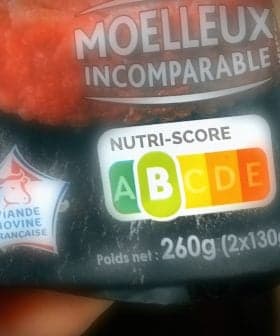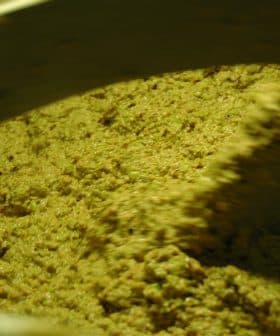How to Store Extra Virgin Olive Oil at Home
Optimal storage entails protecting EVOO from light, heat and oxygen. Proper storage will ensure olive oil’s quality and health benefits are preserved for as long as possible.
 20.0K reads
20.0K readsExtra virgin olive oil is a key ingredient in the Mediterranean diet, with its health benefits and unique flavor making it popular among chefs worldwide. Proper storage of extra virgin olive oil is essential to preserve its quality, with factors such as temperature, light exposure, and oxygen contact playing a significant role in maintaining its properties over time. Different types of containers, such as glass bottles, tin cans, and bag-in-box containers, offer various levels of protection against these damaging factors, with each having its own advantages and disadvantages.
extra virgin olive oil is the flagship ingredient of the Mediterranean diet.
Its healthy properties are the focus of hundreds of scientific studies, while EVOO’s unique flavor makes it a cherished secret ingredient of many chefs around the world.
The Michelin-star chef Luigi Sartini, in San Marino, told Olive Oil Times“almost all of my recipes end up with an extra virgin olive oil finishing.”
See Also:Olive Oil BasicsGiven its significance as a high-quality ingredient, more people around the world are choosing extra virgin olive oil for use at home.
Once in the kitchen, extra virgin olive oil must be properly handled and stored to preserve its healthy characteristics and its special flavor over time.
Storing larger quantities of EVOO
Oxygen is the biggest threat to extra virgin olive oil quality. Contact with oxygen is the leading cause of oxidation (light and heat cause oxidation too).
Some of EVOO’s most important components, such as its polyphenols and tocopherols, play a role in defining its flavor and healthy properties as well as in preserving its quality.
When extra virgin olive oil comes into contact with oxygen, it oxidizes. When this happens, the polyphenols oxidate first, protecting the product’s fatty acids.
Producers deploy a number of procedures and technologies to limit or even avoid contact with oxygen. They know that handling is crucial, and that is as true at home, where extra virgin olive oil may be stored for months before its actual use.
High-quality extra virgin olive oil is often directly bought from the producer, who sells it in sealed containers that can hold different quantities, usually up to five liters.
“To preserve EVOO, every container, big or small, shall have to be filled up to the top and be correctly sealed, to reduce as much as possible the space available for oxygen,” Alessandro Ceraudo, a producer in Latera, Italy, told Olive Oil Times. “Once opened for daily use, the can or bottle should always be properly closed immediately after.”
The temperature factor
EVOO is a resilient product and is easily shipped by producers all over the world. Still, functional storage of extra virgin olive oil cans and bottles in the home requires avoiding extremely low or high temperatures.
The optimal temperature range for extra virgin olive oil storage is between 14 ºC and 18 ºC. Such a range contributes to longer durability for the most relevant extra virgin olive oil properties. Still, many of its qualities will be safe even if temperatures fall significantly out of that range.
Under 12 °C, extra virgin olive oil might begin to show signs of solidification, but that will not damage its organoleptic and nutritional qualities. Such damage can instead occur when temperatures get too close to 0 °C.
On the other end of the spectrum, higher temperatures also lead to oxidation.
EVOO thrives in the dark
Light has a significant effect on extra virgin olive oil quality and durability.
An extra virgin olive oil stored in full light will quickly lose its healthy profile, even degrade in a matter of months to the point of no longer being edible.
Among the reasons for this is the role exerted by chlorophyll, an extra virgin olive oil component that is triggered by light exposure. Once this happens, the chlorophyll destroys other crucial extra virgin olive oil contents.
Storing extra virgin olive oil in the dark guarantees a duration that is almost three times longer than storing it in the light.
More specifically, EVOO’s healthy properties are easily preserved in the dark and can still fully express themselves in terms of flavor and health benefits even after prolonged storage.
While dark glass bottles, bag-in-box containers and tins remain the most popular ways to store EVOO, sometimes the product may come in transparent bottles.
In any such case, check when the extra virgin olive oil was bottled and whether its color is somewhat orange, which is an easy way to spot the chlorophyll activation.
When purchasing extra virgin olive oil in transparent bottles, following the aforementioned tip of pouring the bottle into various smaller containers will help preserve quality.
Comparing bags, tins and bottles
A growing number of producers sell their EVOOs in bag-in-box containers. The bags inside the box progressively deflate as the product is poured out of the container, limiting the oil’s exposure to oxygen.
Bag-in-box containers allow consumers to store larger quantities of extra virgin olive oil safely at home for longer periods. However, the bags are usually made of plastic and are not refillable.
Traditionally, producers have stored and sold their extra virgin olive oils in tin cans. These containers are opaque, blocking the harmful effects of light. They also minimize the quantity of oxygen that enters and, given their durability and strength, may be easily stored.
Tin cans are made of steel with an internal tin lining, which avoids any possible chemical alteration of its content. These containers can also be used directly in the kitchen or put on a table at home.
Furthermore, it is possible to buy tins in all sizes, but their metallic appearance is not always considered aesthetically pleasing and might lead consumers to choose other types of containers.
See Also:How Packaging Influences Olive Oil QualityHowever, glass bottles are the most widely used container for EVOO, which are seen as more aesthetically pleasing. They are the preferred method of storage for many high-quality extra virgin olive oil producers.
Still, glass bottles are susceptible to light penetration, which makes them well-suited for smaller quantities of extra virgin olive oil used for tastings or for use in the kitchen.
Given the growing consciousness of the damage caused by light, many producers have begun using glass bottles that are completely coated in an opaque material; a solution that preserves the option to invest in original and elegant designs.
Ceramic bottles are also becoming increasingly popular because of the easy personalization they offer and the message of tradition and connection to the territory inspired by ceramics.
While being more delicate and prone to breaking than some of the alternatives, ceramic bottles allow for the highest level of protection against light contamination.
However, most extra virgin olive oil sold is sold in PET containers. These bottles come in many different shapes and sizes and may be easily personalized by the producer.
PET containers are also quite resistant to transportation and easy to handle. However, most of them are transparent, so they must be stored in a cool and dark place to maintain their quality.
How long can extra virgin olive oil be stored?
While many countries have different regulations about EVOO, in the United States and European Union, its shelf life is 18 months.
Still, as extra virgin olive oil qualities depend on many different factors – from the specifics of the production phase to the following exposure to temperature, light and oxygen – the actual limit for its quality to degrade might be significantly different.
In optimal storage conditions at home, olive oil will maintain its extra virgin qualities for as long as two years. Consumers can tell when the oil is no longer extra virgin as they will begin to taste one of the main defects – rancidity, fustiness, winey-vinegariness or mustiness.
“A good strategy for those who make daily use of extra virgin olive oil at home is to estimate the amount needed for one year of consumption and buy it accordingly directly from the producer,” Ceraudo said. “It should be bought right after the harvest when the olives are processed and the new extra virgin olive oil is produced.”
Share this article









